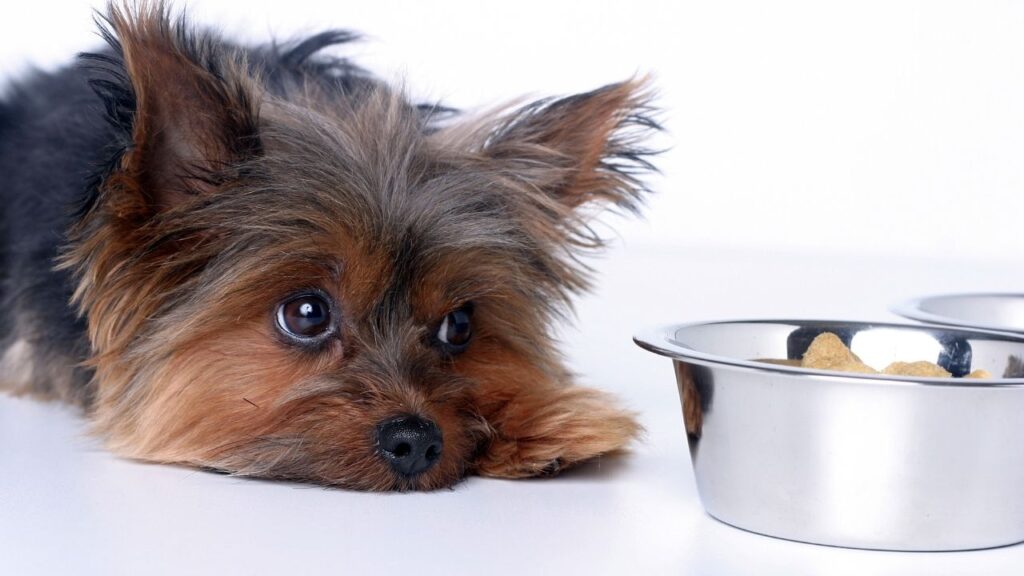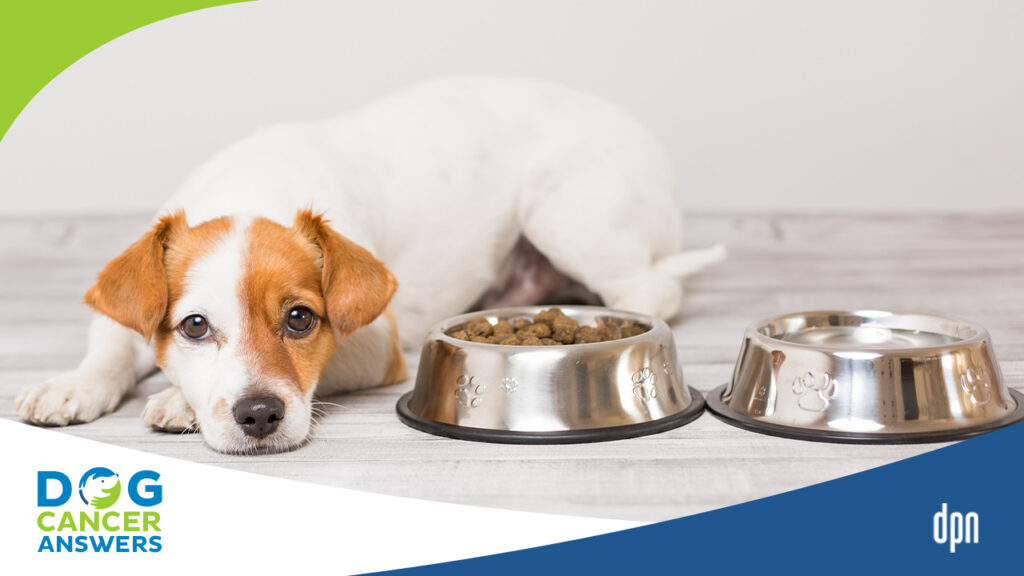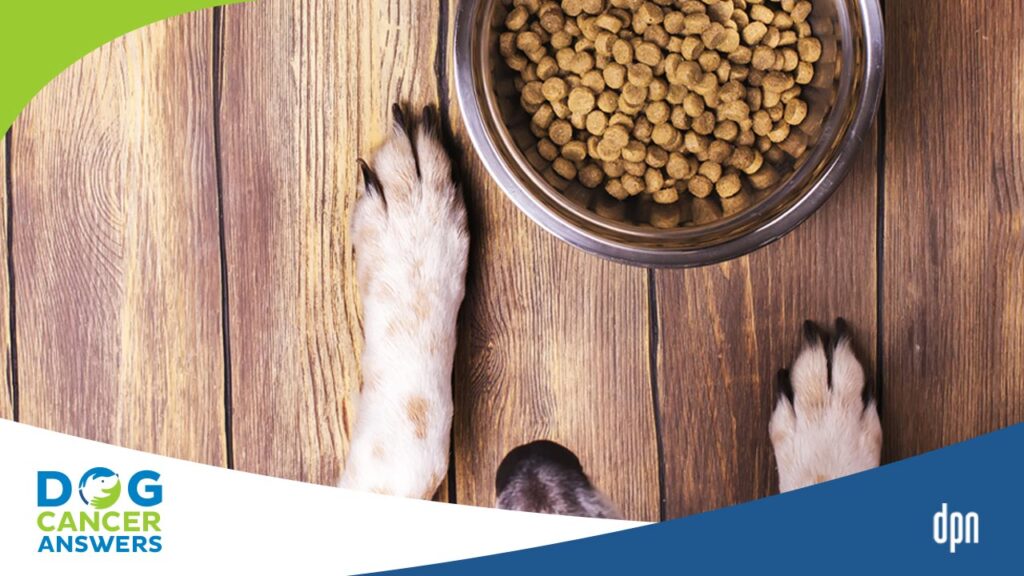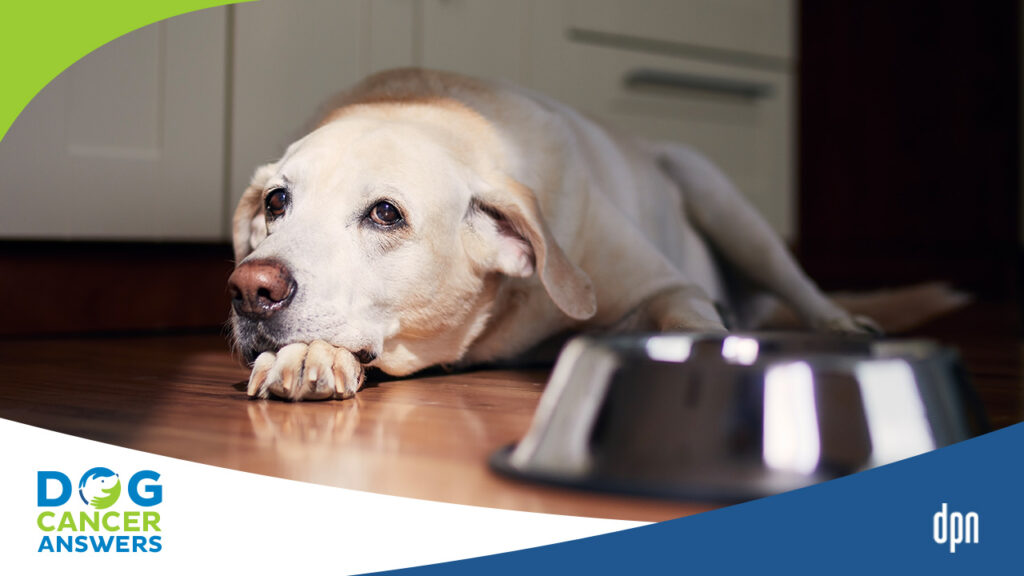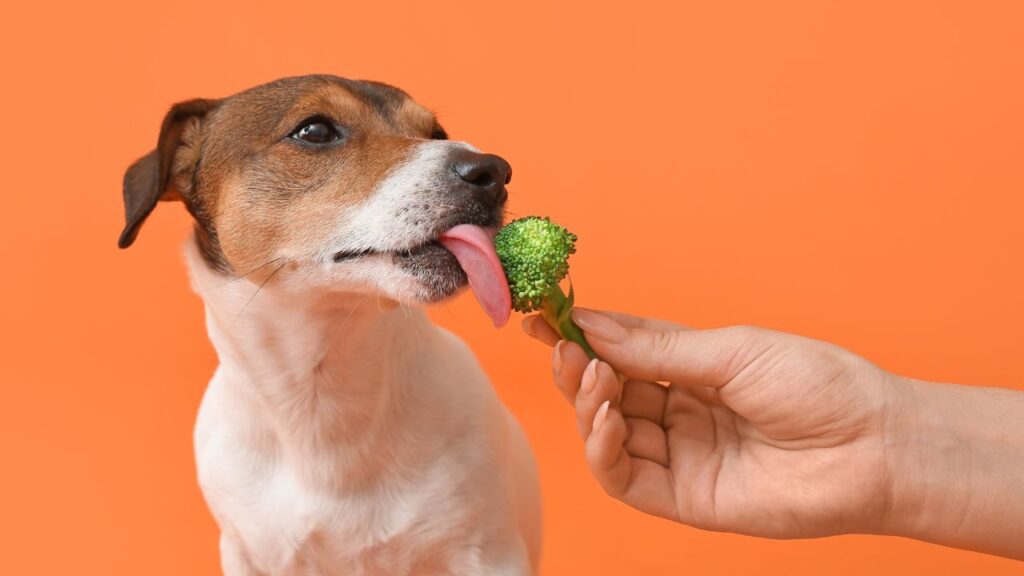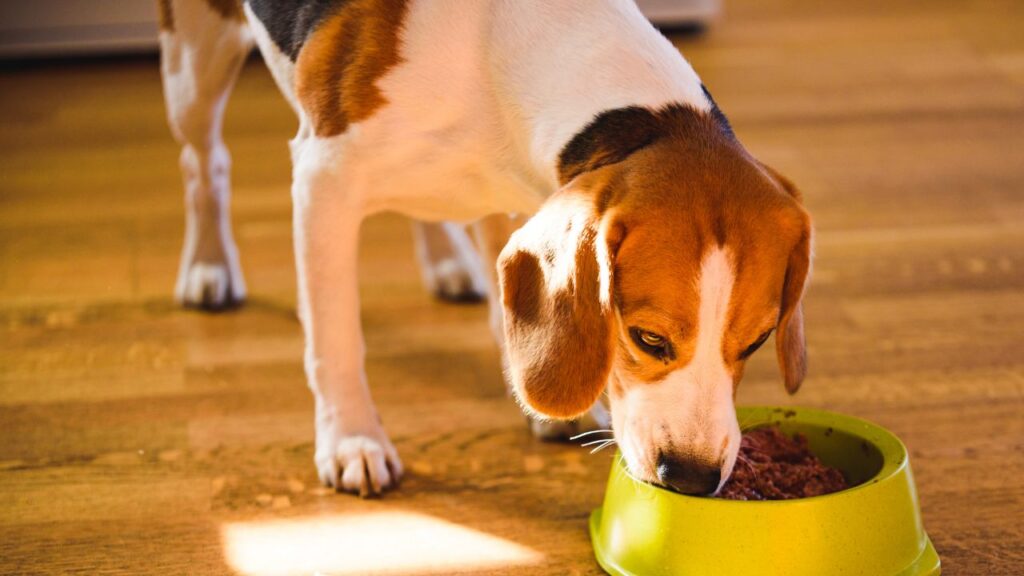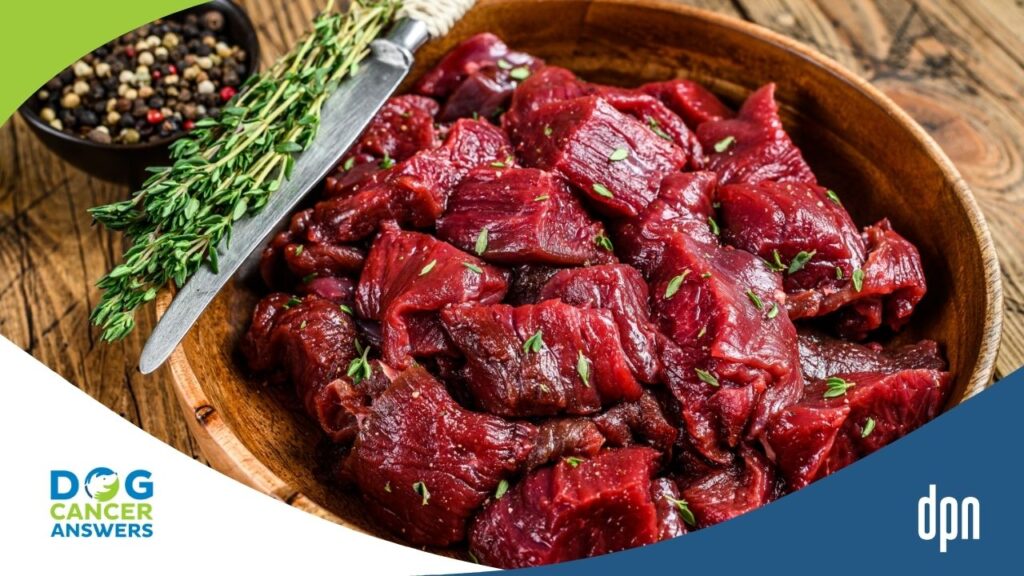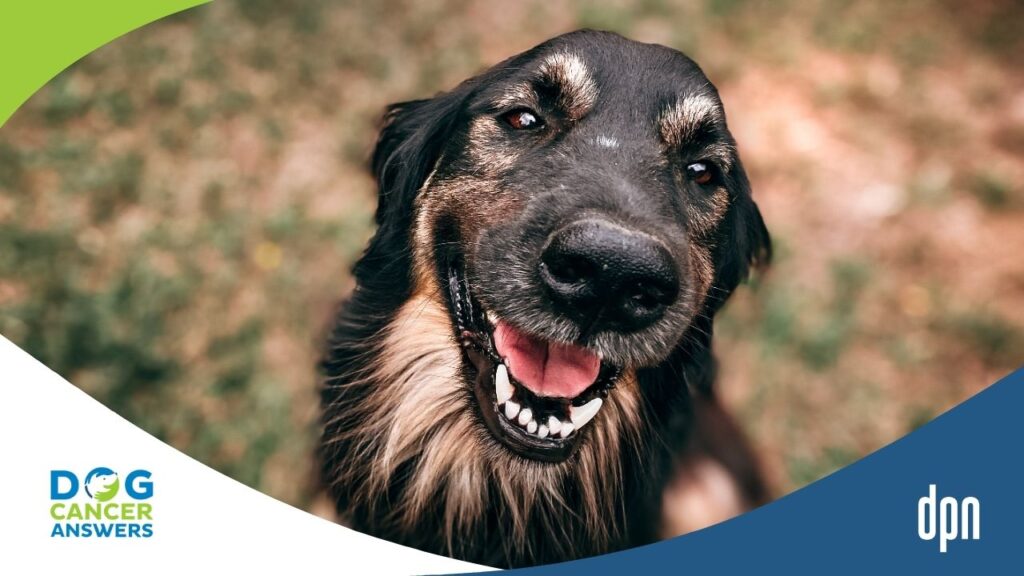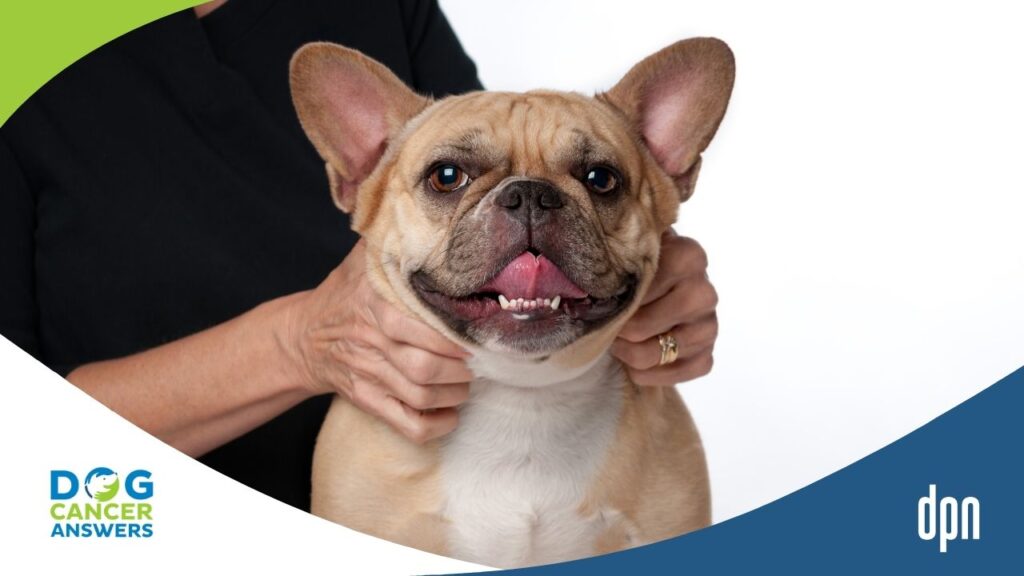EPISODE 233 | RELEASED November 27, 2023
How to Get a Dog to Eat That Refuses To Do So | Dr. Susan Recker
Your dog won’t eat. What on earth do you do? Dr. Susan Recker has lots of great advice for how to get a dog to eat that refuses to do so.
SHOW NOTES
How do you get a dog to eat that refuses to do so? Force doesn’t work. Neither does pleading. And panicking certainly doesn’t help … but we all tend to panic when our dogs won’t eat.
So, what do we do? Veterinarian, teacher, and veterinary nutrition expert Dr. Susan Recker joins us for an enlightening discussion about why dogs don’t eat, and what we can do to help them.
Whether the cause is nausea or pain, she has tips and advice about when to worry about not eating and not drinking, and when to call the vet.
Dr. Recker guides us on how to figure out what’s actually wrong – and by the way, it might not be anything wrong with your dog that’s causing the inappetence!
Call +1 808-868-3200 to leave a question on our Listener Line for a future show!
Links Mentioned in Today’s Show:
“Good Day Sunshine” by The Beatles https://www.youtube.com/watch?v=6dC7ILQ_vtE
Article on Dog Not Eating: https://www.dogcancer.com/articles/side-effects/dog-not-eating/
>> Dr. Susan Recker: There can be a number of reasons related to cancer or unrelated to cancer in the dog with cancer to make them not want to eat. And that’s definitely where we need to start first.
>> Announcer: Welcome to Dog Cancer Answers, where we help you help your dog with cancer.
>> Molly Jacobson: Hello, friend. I’m Molly Jacobson, and I’m so pleased you’ve joined us today for a very important episode. I know this comes up for almost everybody who’s listening, suddenly your dog won’t eat. What do you do? Well, to answer that question, we have Dr. Susan Recker joining us again. Dr. Recker is an expert in food and nutrition for dogs. And I’m so looking forward to sharing this conversation with you. Dr. Susan Recker.
Thank you so much for joining us again on Dog Cancer Answers.
>> Dr. Susan Recker: It is my pleasure to be here. Thanks for inviting me.
>> Molly Jacobson: I’m really, well excited is the wrong word, I am eager to speak to you today about our topic, which is how to help dogs who aren’t eating, how to tempt them to eat. This is a really, really big topic of concern for many of our listeners.
And I know I personally feel panicked when my dog won’t eat. So let’s just start there. Why don’t dogs eat? And then why don’t dogs with cancer eat? Why do they stop eating in the first place?
>> Dr. Susan Recker: Gosh, that’s such a, that’s such a good question with so many answers. I mean, there’s so many factors at play here and I’m glad you started there because I think that is where we have to, to start the investigation to solve this puzzle and try and find a solution for the dog who’s not eating.
There can be a number of reasons related to cancer or unrelated to cancer in the dog with cancer to make them not want to eat. And that’s definitely where we need to start first. So, you know, is it a matter of nausea? Is the dog nauseated and that’s why he doesn’t want to eat? And so if so, if there’s a cause that we can identify and remove, great.
That’s the ideal thing. But sometimes, especially for the dog with cancer, maybe the nausea is coming from treatments or from the cancer itself. And so it’s definitely worth a conversation with your veterinarian to see if there are any medications or supplements that might help with the nausea and take that out of the equation to bring the appetite back.
>> Molly Jacobson: How do you know if a dog is nauseous or not?
>> Dr. Susan Recker: Yeah. Good question. So sometimes you’ll see overt signs like drooling, you know, they might go up to their food bowl and seem like they’re interested. They take a sniff and then they’re like, nah, no, I don’t think so. And they walk away.
>> Molly Jacobson: Is that the same thing we do when we haven’t eaten for a while. We’re sick, and then we can’t eat because our GI system is upset. And then we smell food and it smells so good. And we’re so hungry and we think we want to eat something. And then when it gets closer, we feel like literally nauseous, like I can’t eat anything. That makes me feel like throwing up again?
>> Dr. Susan Recker: Yeah.
>> Molly Jacobson: Is this what the dog’s going through?
>> Dr. Susan Recker: I think that totally happens for dogs. And you know, dogs are individuals just like people are individuals. So it’s going to present differently for different dogs. But I think that is a very common scenario. And so that whole like they go up to the bowl, they seem like they’re into it.
They take a sniff, maybe take a lick and then they back away. I think that is a compelling suggestion that maybe nausea is part of the issue.
>> Molly Jacobson: Okay.
>> Dr. Susan Recker: So other things you might see would be just avoidance of the bowl in general. Like some dogs are like, no, I can’t even look at the food. You know, they just don’t even go near the area where they might be fed. Or even if they smell food being prepared, they might leave the room.
So if you see avoidance behavior with the food, definitely nausea is one of the things to have on the list to check out.
>> Molly Jacobson: Okay. Why else wouldn’t a dog eat?
>> Dr. Susan Recker: Pain can be a big one. So, pain in the mouth, if there’s dental disease going on, that can definitely decrease their willingness to eat, but pain anywhere in the body, you know, if they’re struggling with arthritis pain that’s unaddressed. They might not want to eat just because the pain is so front and center on their experience. And that’s all they’re thinking about right now or all they’re aware of.
So addressing pain, again, whether it’s related to the cancer specifically, or it’s a separate issue is something that’s important and the mouth oral dental pain, it could be cancer related or it could be dental disease related and that might be something where, you know, sometimes people think, gosh, that’s the last thing we have to worry about right now. My dog has cancer. I can’t worry about his teeth.
Well, I get it, but if the teeth are causing your dog not to eat because there’s too much overwhelming pain and discomfort in the mouth from dental disease, then gosh, we’re never going to get ahead of things and help his body heal or fight cancer or whatever it’s got to do if he won’t eat anything. So dental disease is a big one.
>> Molly Jacobson: So talk about not eating in time a little bit, because a lot of people feel like, you know, my dog skipped a meal. Now, you know, like it’s an emergency.
>> Dr. Susan Recker: Right.
>> Molly Jacobson: Like, is that an emergency? How long can a dog go without eating?
>> Dr. Susan Recker: Yeah. So no, skipping one meal is not an emergency. It should get your attention, particularly if your dog typically has a really good appetite and all of a sudden she, she skips a meal, you should say, Hmm, what’s up? But no, she’s not in any immediate danger, assuming she doesn’t have issues with blood sugar or something like that if she just skips one meal.
Hydration is super important. So not drinking anything, if she goes 24 hours without drinking, we have a big problem.
>> Molly Jacobson: Okay.
>> Dr. Susan Recker: Yeah. And so you need to get to the vet, get some fluid support or something to get hydration status back up to where it needs to be. But in terms of skipping meals, not that I would say don’t worry about it if your dog doesn’t eat for a few days, but your dog does have a few days of not eating assuming that all the typical reserves were there to begin with.
Now, if your dog is super debilitated and goes a few days without eating, she might become debilitated to the point where we are in danger zone. But if we’re talking about a dog who’s starting at a pretty healthy baseline, yeah, they can go a few days without eating before things get dire.
I would use that time to try and use some of the strategies that we’re going to talk about to entice them to eat and not just wait it out. But I also wouldn’t panic the first time your dog skips a meal.
>> Molly Jacobson: Okay. So don’t panic. But how long is a few days? Is that three days, four days, five days, 10 days? Like how many days is a few days?
>> Dr. Susan Recker: Well, with your dog with cancer, I would say if your dog goes 24 hours without eating a bite, you should probably call your veterinarian and start talking about, okay, what do we need to look at? If your dog’s eating a little bit, but not as much as typical, but say maybe your dog’s consuming 25 percent of her normal intake, then you might wait two or three days and then call the veterinarian and say, gosh, something’s up.
So my rule of thumb kind of is if your dog has cancer, if she goes 24 hours without eating a single bite, it’s time to step in.
>> Molly Jacobson: Okay. That’s a good guideline. And then dehydration issue is a separate issue, but can be related, which is 24 hours, dog of any health status.
>> Dr. Susan Recker: Yes.
>> Molly Jacobson: No drinking. Call the vet.
>> Dr. Susan Recker: Absolutely. And I’ll add an addendum to that. If your dog is losing fluids excessively in any way, then that timeline is even shorter. So if your dog is vomiting, if your dog is having diarrhea, if your dog has a fever, which will also cause their fluid needs to increase, then I wouldn’t wait 24 hours. You know, if it’s 12 hours, I would go to the veterinarian then.
>> Molly Jacobson: Okay, so as we’re not panicking.
>> Dr. Susan Recker: Now is not the time to panic.
>> Molly Jacobson: Right. We’re not panicking because our dog is not eating. We are. We’re in observation mode and we’re thinking and we’re noticing, right? We’re like taking notes and writing things down.
>> Dr. Susan Recker: Yes.
>> Molly Jacobson: And we’re going to try some things. What are the things we should try with our dogs?
>> Dr. Susan Recker: Yes. So then the first thing that I would do, I’m still kind of in investigation mode at this point. And the first thing that I would investigate is the food itself. So is the food safe? You know, sometimes your dog is telling you, Hey, my food’s off. Maybe my food is old. Maybe my food has mold growth and has mycotoxins in it.
Maybe it’s got rancid fats in it. So your dog’s sense of smell is very acute.
>> Molly Jacobson: Much more acute than ours.
>> Dr. Susan Recker: Yes, absolutely. So if your dog runs over and sniffs the food and turns up his nose and runs away and says, no, thank you. The first thing I would check is, is this food okay?
>> Molly Jacobson: Okay. How do you know if you’re feeding like a kibble or a commercial diet, like what would you look for?
>> Dr. Susan Recker: You know, so definitely I would take a sniff, but again, our sense of smell is not as good as theirs is. I would hop online and look for recalls on that particular food. If there is an off color or an off texture or an off feel, sometimes the oils in the food become rancid and it will have kind of a different greasy texture.
>> Molly Jacobson: It gets greasy. That’s true.
>> Dr. Susan Recker: Yeah. Yeah. So all of those things may not be confirmatory in and of themselves that there’s something wrong, but if anything looks different or smells different or seems different about a food that you normally feed your dog, then I would wonder if there is something perhaps wrong with that food.
>> Molly Jacobson: And then would you offer a different food that you’re confident is fresh to see if they take that?
>> Dr. Susan Recker: Yes, yes. And again, dogs are all individuals just like people. So some dogs are super invested in that one food that they like. And so if that’s the case, I would get a fresh bag or fresh can or fresh package of that particular food to see if your dog says, Oh, okay, this is, you know, this is good. I’ll eat this.
On the other hand, if your dog is open to variety and will eat a variety of different foods, then I would try a different food at that point to see if you’re, she’s interested..
>> Molly Jacobson: Okay. And then if you’re doing like a homemade diet, because a lot of people do for their dogs, you know, even just adding things to a commercial diet.
>> Dr. Susan Recker: Yeah.
>> Molly Jacobson: Is there anything that you want people to look for in that sort of food?
>> Dr. Susan Recker: Yeah. So with homemade foods, the same food safety things that apply to human consumption apply to dog consumption. So ensure that if you’re making a homemade diet for your dog, you’re using ingredients that you would feel comfortable eating yourself.
So if it’s past its prime and it’s too old for you to eat, it’s too old for your dog to eat also. So give it the visual test, the sniff test and apply the same guidelines that you would for yourself.
>> Molly Jacobson: Yeah. Just as a side note, it feels like a lot of people don’t know that if meat or fish has a smell, that means it’s not fresh anymore. That means there’s bacteria growing. Like if you can smell it, it shouldn’t really smell like anything.
>> Dr. Susan Recker: Right. Yes. That’s so true.
>> Molly Jacobson: Yeah. That’s a big one. I’ve learned firsthand that people are like, no, well, it didn’t smell great, but I thought it would be fine. Nope. If it does not smell, it shouldn’t really smell like anything. And then, you know. you’re dealing with something, it’s probably fine.
>> Dr. Susan Recker: Yes.
>> Molly Jacobson: Yeah. Even then it can still have problems, cook it thoroughly.
>> Dr. Susan Recker: Exactly. Exactly. Yes. Yes. That’s a good point. And texture, again, you know, things that shouldn’t be slimy, shouldn’t be slimy. So don’t feed them if they are.
>> Molly Jacobson: Yeah. That slime is not like, that’s some organism breaking down the protein in that piece of meat, right?
>> Dr. Susan Recker: Yes.
>> Molly Jacobson: So the slime is the meat disintegrating under the action of a pathogen. That’s literally what it is.
>> Dr. Susan Recker: Yes, exactly. Exactly. And we don’t want to eat that and neither does your dog.
>> Molly Jacobson: Right. Okay. Okay. Very good. So what else can people try? If their dogs aren’t eating?
>> Dr. Susan Recker: Yeah. So if we’ve determined that the food we’re offering is safe, but the dog is just not interested, then the next thing I will look at in the investigatory phase is, am I sure that I’m not giving so many treats that my dog is getting full and not wanting to eat his meal?
And, and not that treats can’t be a valuable part of his food intake. They absolutely can be depending on what it is. But if you’re giving your dog so many treats throughout the day that he’s actually full by the time it comes to dinnertime, that might be the problem. So just take a critical look at how much food your dog is getting throughout the day.
And again, I’m not saying you can’t do that. Just use those opportunities to provide nutrition. So if your dog’s more than happy to eat a treat format food morsel, but does not want to eat a meal out of the bowl, then just offer your dog’s food as treats so that you’re getting that nutrition in throughout the day.
And if your dog is turning up his nose at the actual food, the meal, the diet that you’re feeding, but he’s still open to treats, then we can kind of branch out into some more nutritious things to offer as treats. So things like lean cooked meats, you know, you can offer some pieces of cooked chicken or pieces of cooked beef or whatever the case may be.
You could offer sardines, you could offer cooked veggies, you could offer berries. So all of those things that are chockfull of nutrition, those can be treats if they’re offered as bite-sized morsels throughout the day, and that’s another way to get in some more nutrition if your dog is not wanting to eat a meal during the day.
>> Molly Jacobson: So are you less worried about a dog who is willing to sort of be hand fed treats throughout the day or nutritious foods offered as treats rather than a full meal? Are you less worried about them in terms of pain or nausea that it’s maybe something else?
>> Dr. Susan Recker: Yeah. Or I think it still could be pain or nausea. And sometimes that novelty factor will override it depending on the level of pain or nausea, right? But I’m always more concerned about when the owner says to me, he won’t eat anything. He won’t eat his treats. He won’t eat his food. He won’t, you know, beg for a bite of my husband’s cheeseburger, whatever the case may be.
If they’re saying he won’t eat anything, I am far more concerned than if they say he won’t eat his food, but he’ll still eat his treats. I’m still going to look at things and figure out what’s going on, but some food intake of some sort is better than no food intake at all.
>> Molly Jacobson: Okay.
>> Dr. Susan Recker: Yeah.
>> Molly Jacobson: Should we be worried if the only things our dogs eat are like junk food? Like my dog Kanga once literally lived on, she would eat mini marshmallows for two days after surgery.
And we offered them in desperation.
>> Dr. Susan Recker: Yes, yes.
>> Molly Jacobson: Because we were so worried about her.
>> Dr. Susan Recker: Yeah.
>> Molly Jacobson: It almost felt at first like she was, she was eating them out of pity for us. Fine, I’ll have a marshmallow. We didn’t feel great about feeding her marshmallows, but.
>> Dr. Susan Recker: Yeah.
>> Molly Jacobson: I mean, did we do the wrong thing? Judge us in reverse.
>> Dr. Susan Recker: No, I support you in that. And while I certainly wouldn’t endorse feeding a diet of marshmallows exclusively for a long period of time, you didn’t do that. You just did that over two days when her appetite was not good. And if we can keep them eating something, even if it’s junk food, I feel like that is oftentimes easier than if we have to jumpstart them after they’ve had a period of total hunger strike.
So if you can find something that they like and they’ll eat and it’s not toxic, then yes, I’d rather see a dog eat a little bit of junk food than nothing at all. So yes.
>> Molly Jacobson: Okay.
>> Dr. Susan Recker: No judgment.
>> Molly Jacobson: Okay. Good. Well, we try to maintain a judgment free zone, but you know, that’s one of the niggling things and it’s so common. I know for everybody listening is that, you know, I still have things that I think about. I wish I hadn’t done that. Or I wonder if I did the right thing. And that’s one of them, even though I know intellectually that it was fine, and she never had a marshmallow before then, and she actually never had one after that.
But it still, it felt like, I guess, pure sugar and some gelatin is better than zero things, for my peace of mind.
>> Dr. Susan Recker: Right.
>> Molly Jacobson: Which you probably wouldn’t find without eating at all, but I don’t know, I feel like it was, it was a little pleasure for her while she was in intense pain from a major abdominal surgery.
>> Dr. Susan Recker: Absolutely. Absolutely. I mean, I, you know, when my kids have had strep throat in the past, have they eaten an entire day’s worth of popsicles or ice cream? Sure. And was that nutritionally ideal? No. But you know, for the short term, sometimes that’s what we have to do.
>> Molly Jacobson: Right. Okay.
>> Dr. Susan Recker: And one caveat to that, I guess I would say is you have to know your dog too. You know, if you have a dog that’s prone to pancreatitis or something like that, you’re not going to offer a high fat treat that could trigger a round of pancreatitis and then add insult to injury and create another problem on top of the original problem.
So knowing what your dog historically tolerates and accepts and does okay with would help guide you in this circumstance. So if you know there’s something your dog really, really likes, but it’s junk food, so you don’t give it to them often, this might be a good time. And you can sometimes use that junk food as a vehicle to get the healthy food in there.
So, you know, they don’t oftentimes have the same biases towards foods that we do. So you could even put a little morsel of, ground beef on a marshmallow and offer it to a dog. And the dog might think that’s fantastic.
>> Molly Jacobson: Right. They’re not thinking that does not make sense. You have the protein first and you have dessert later. They’re fine with dessert mixed with the first course.
>> Dr. Susan Recker: Yes. Exactly.
>> Molly Jacobson: Oh, that’s hilarious. That’s true. And that is what happened actually, now that I think about it, that she, I mean, she didn’t eat a lot of marshmallows, probably like 10. She was a Maltese. So very small, you know, one marshmallow every hour or so for a couple of days, and then she literally asked for other food.
She like, you know, kind of pointed her nose towards her bowl and started licking her lips in the way that she did when she was very clearly signaling it’s time for dinner. And that’s when we sort of knew she could handle a little bit more food. So yeah, that makes sense. It’s just sort of something to soothe your stomach while you’re keeping it empty. Dogs kind of know things about their own bodies, don’t they?
>> Dr. Susan Recker: Oh, they totally do. I think far more than we give them credit for. And I’m not going to talk about zoopharmacognosy today other than to just bring it up as it relates to food. So zoopharmacognosy is the idea that animals will self select medicinal items that they need, according to whatever’s going on in their body. And I think they do that same thing with food.
So that’s actually another thing that I would recommend in the case of an animal with a poor appetite is offer them a buffet, a small amount of multitude of things and see what they like. You know, they might leave. 15 things on the plate, but if they zero in on that one item and they eat it, then you know that you have something that you can offer them that they’ll eat.
Now they might not eat it again, they might not eat it for four meals in a row, they might just eat it the one time, but if you have to, you can continue to offer that rotating selection in a buffet that will maybe entice them to try something and get a little bit of nutrition in.
So the other part of that that can be helpful is the mental stimulation, the enrichment. Sometimes for some dogs who are more motivated by play or novelty or stimulation than they are by food, will engage in an activity that involves food because of the brain games that it provides.
So if you were to take a muffin tin, say, and put a morsel of six different foods, one in each different well, and offer that to your dog, that game might be enough to entice them to consume some of the prizes that they find in the tins.
>> Molly Jacobson: That’s interesting. So you can think of food as an enrichment activity, and that might take your anxiety down too, to think we’re doing two things at once and I don’t have to focus on just is my dog eating or not?
>> Dr. Susan Recker: Absolutely. Yes. Yes.
>> Molly Jacobson: Gives you an opportunity to see the dog engaging.
>> Dr. Susan Recker: Yeah. Yeah. And it can be kind of fun for your dog to encounter new tastes and textures that maybe he hasn’t had before. And you might discover some foods that he would like to have in his repertoire even after he’s feeling better.
>> Molly Jacobson: Great. So we’ve got food safety, check the foods, make sure they’re safe. We’ve got offer treats or their food in treat form and a buffet of tastes to see if they self select what they need, is there anything else people can try?
>> Dr. Susan Recker: Yeah. If you typically serve food cold or room temperature, gently warming it might be all that’s needed. That really releases some of those aromas and that can get your dog interested in eating if it’s warm.
So you can do that by warming the food itself, or you can do it by topping the food with something like bone broth or tea or something else that’s going to have some health benefits and that warm fluid might help to make it a little bit more palatable, more appealing at the same time.
>> Molly Jacobson: That sounds like a really good strategy. What kind of tea can you give a dog?
>> Dr. Susan Recker: So nothing with caffeine. But anything like green and black teas that are decaffeinated are fine. Chamomile tea is fine, ginger tea, peppermint tea, mushroom teas, those types of things can be palatable and provide some extra polyphenols, some extra good plant derived chemicals that have beneficial health effects in the body as well as maybe making that meal a little bit more enticing.
>> Molly Jacobson: I bet a ginger tea would be helpful if a dog is having nausea.
>> Dr. Susan Recker: Yes.
>> Molly Jacobson: If you feed a kibble or something and you just mix some ginger tea in there, they might help them to get that ginger in.
>> Dr. Susan Recker: Yep, absolutely. And peppermint has some anti nausea effects too, but I find peppermint to be kind of hit or miss in terms of palatability for dogs. Some dogs seem to like it and other dogs don’t. So this is just another area where trial and error can kind of show you what your dog likes.
>> Molly Jacobson: Right. Okay. So gently warming. What else?
>> Dr. Susan Recker: Let’s see. So along the lines of offering the smorgasbord as not just a survey of what your dog likes, but also mental enrichment would be making that feeding event enriching in as many ways as you can.
So if your dog always eats from the bowl in the corner of the kitchen, try putting the bowl in another room. Try taking the bowl outside, try playing music, try, you know, changing the circumstances in which your dog is eating. I think sometimes what happens is our dogs and cats, for that matter, if they have a bad experience when they’re eating, maybe they have a wave of nausea or maybe they’re experiencing pain. They can generalize that to the experience of eating.
So the next time that it’s mealtime, maybe they’re not having nausea or pain, but they’re still recalling that negative experience. So if we can change up. where they’re eating or how they’re eating and make it a totally different experience, sometimes we can kind of wipe that slate clean and they’re more willing to try it again.
>> Molly Jacobson: And then once they have their appetite back, they’re fine with eating back in the corner of the same room that they’ve always eaten.
>> Dr. Susan Recker: Yes.
>> Molly Jacobson: Okay.
>> Dr. Susan Recker: Although maybe they don’t want to eat in the corner for forever. That’s another, another thing to think about..
>> Molly Jacobson: Right. Maybe they want to feel like they’re more part of the family rather than, yeah, off to the side.
>> Dr. Susan Recker: Exactly.
>> Molly Jacobson: Okay. Let’s take a break to listen to a word from our sponsors. And when we come back, let’s talk more about ways to entice your dog to eat.
And we’re back with Dr. Susan Recker. I wonder, because sometimes it feels like our own stress can get in the way of our dog enjoying their meal. And sometimes I feel like when I’m really upset and I offer my dog food that I’m like offering them in a stressful way and they pick up on that. Am I just too sensitive?
>> Dr. Susan Recker: Oh, I think you’re spot on. I think you’re spot on. I think that, I think that dogs are aware of much more than we think they are. And I think that they’re probably more tuned in than most people are. And I, a hundred percent believe that our dogs can feel it, maybe taste it, I don’t know when we are offering them food in an emotionally less than ideal place.
Not to sound too woo woo, but a few years into my career, I heard somebody say that whenever they approach a patient to do an exam or a treatment, they, not necessarily verbally, but mentally would communicate with that animal and just say something like, okay, Rover, I’m going to look in your mouth now.
I’m not going to hurt you. It’s just going to take a minute. And then everything’s going to be fine. And I started doing that and the level of cooperation and comfort that I saw in my patients dramatically increased. So whether that was just me communicating a more calm energy so that I wasn’t frightening them or what?
I don’t know. But I do think that that spirit in which we approach our dog or have an interaction definitely makes a difference for both of us, for us and for our dogs.
So yeah, I think you’re absolutely right that if, you know, if you’re coming from a place of stress or anxiety or whatever negative emotion, if you’re able to take a moment and just kind of center yourself and calm yourself and remind yourself that you’re offering this food to nourish your dog and that you’re trying to increase their wellbeing and maybe strengthen your bond at the same time, that maybe that will be a more positive interaction or positive experience for both of you.
>> Molly Jacobson: That makes a lot of sense. I have a friend who always plays Good Day Sunshine when she’s upset. Her dog got cancer and she started playing that at almost every meal because she realized that she was getting really upset at mealtimes because she was making a new diet and she was feeling, it was like reminding her of the cancer at every mealtime.
So she started playing that song at mealtimes and she was telling me about it and I listened to it and I thought, I think maybe that song is actually a perspective of a dog.
>> Dr. Susan Recker: Aww. I love that.
>> Molly Jacobson: I think maybe the person singing in that song, the narrator of that song is a dog. Like if you think of it from a dog’s point of view, it’s all matches. And so that’s my tip about putting yourself in a good mood and putting yourself in a doggy mood and then offering your food.
It’s like so magical to have a happy place that you meet your dog in and then they meet you back. And I don’t know. That’s why I like my dogs. They make me happy. And mealtimes are a great time to experience that together.
>> Dr. Susan Recker: Oh, for sure. I mean, we, as people, we like to share meals together. That’s a time of community and connection. And I think that can totally be the same for us with our dogs. And sometimes we can have a tendency to just, you know, it’s one more task to feed the dog. So you just fill the bowl and put it on the floor and walk away.
And that could be a missed opportunity for connection there. And especially for a dog that’s maybe in pain, maybe nauseated, maybe just not feeling well for whatever reason, that connection might be the missing link to help them to eat. So, you know, if, if you want to sit on the floor with your dog and hand feed, that might be all it takes to get their appetite back.
Certainly dogs in the hospital, we do that all the time. If we have a dog that doesn’t want to eat, you know, you’ll frequently see a veterinary technician in the cage with the dog, laying on the floor, hand feeding them to see if they’ll eat. And sometimes that’s what it takes.
>> Molly Jacobson: Wow. Okay. So if veterinary technicians are doing it in the more sterile environment of the veterinary hospital and it’s working, it might work on your kitchen floor.
>> Dr. Susan Recker: Yeah, absolutely.
>> Molly Jacobson: So taking the food out of the bowl with your hand and just offering it to your dog so they can eat from your hand instead of the bowl.
>> Dr. Susan Recker: Yes. Now, again, I always have to offer a word of caution.
You know your dog best. If your dog is a snatch and gulper, please don’t put yourself in danger of having your fingers bitten off and even unintentionally, and maybe in that case you could put it on the end of a soft spoon or something like that and offer it to your dog that way, just to kind of forge that connection as opposed to having the impersonal bull be the middle ground.
>> Molly Jacobson: Oh, that’s very sweet. That’s very sweet. Any other tips for things to try?
>> Dr. Susan Recker: So I mentioned using the muffin tin as the vehicle for the smorgasbord, but you can use literally anything. Like if you have a, a lick mat, uh, enrichment device, that’s a great thing to use, but it can be really anything. It can be a plate, it can be a cutting board, it can be the floor itself. It can be anything, just anything that kind of engages your dog and makes it new and novel.
We talked about using broths or teas, but you can use other toppers as well. You could use a little bit of natural peanut butter or natural almond butter and smear that on the top of the food. Sometimes, you know, they go for the good stuff on top and they inadvertently get some of the, the real food on the bottom and then they decide it’s not so bad and they keep going.
Anything that’s kind of like a gravy or a jelly. And I mentioned jelly in particular, if you’re making a homemade kind of jelly, you would be using gelatin that’s unflavored, you know, no sugars, no colors, nothing like that. That gelatin itself can be pretty healing to the gut. It helps to increase the health of the stomach itself and the intestinal lining.
So that’s kind of a, a tricky little medicinal way to try and increase the palatability of the food as well.
>> Molly Jacobson: Just to put the powder right in the food? Like a…
>> Dr. Susan Recker: No, you would make a jelly out of it. So you would mix it with the, follow the package directions with the hot water and the cold water, whatever it says.
>> Molly Jacobson: So like the Knox gelatin is the brand that I’m familiar with, just those little packets of unflavored gelatin.
>> Dr. Susan Recker: Yes, yes. Or like I will use beef gelatin, like NOW brand makes a beef gelatin and there’s other beef gelatins. And so I will just use that powder with water and I will make it thinner than if I were making like a jello mold or something like that.
And then it just takes on like a jelly like consistency and you can use that as a topper over the food for some medicinal benefits as well as hopefully to entice. eating. Cottage cheese would be another topper that you could use. A little bit of cream cheese can be used also if your dog likes that. And we mentioned using fruits and veggies and lean meats as treat foods to get some nutrition in throughout the day, but those can certainly be toppers on the bowl.
>> Molly Jacobson: What about yogurt and kefir? I know a lot of people who want to give their dogs yogurt and kefir. Where do you land on that?
>> Dr. Susan Recker: Yeah. I think if they’re plain unsweetened, I think that’s a great thing to use. With anything that your dog hasn’t had before, I would start small, you know, so don’t go whole hog with half a cup of yogurt, but start with a teaspoon and see how that goes and work up gradually from there. But yeah, the no sugar option for yogurt or kefir, that’s great. That’s, that’s good gut health stuff right there.
>> Molly Jacobson: Yeah, for sure. Are there any other specific foods that might be interesting to dogs to try?
>> Dr. Susan Recker: Another one that I will pull out for my especially picky eaters, I use this a lot in cats, but sometimes in dogs too, would be the juice from a tuna or a salmon can. So just open up that can and pour that juice right on there and it’s good and stinky and, uh, stinky in a good way, you know, smells like it’s supposed to smell. And that oftentimes will tempt dogs to dive in and give it a try.
>> Molly Jacobson: That makes a lot of sense, yeah.
>> Dr. Susan Recker: So, you know, over the long haul, we want to make sure that the diet is complete and balanced and is meeting all the needs that your dog has. But in the short term, when we’re dealing with challenges with eating and your dog’s being a picky eater and not having full food intake, we can’t follow all those rules and we can’t worry about it either. So eating something is better than eating nothing.
And if we can find some yummy food that to eat when he’s not feeling the best, that is far better than just putting the bowl of the most beautiful, complete and balanced meal you can imagine down and your dog not touching it. That’s not helping anybody. So taking that time to find the foods that will tempt your dog and celebrating every win. You know, if your dog takes three bites that day, that is way better than no bites.
And so just keep working on it and keep looking for things that your dog might eat and know that one day of not eating well, or even a couple or a few days of not eating well, is not the end of the world. You don’t have to panic. Absolutely be looking for causes and be looking for anything you can do to make your dog feel better.
But, you know, if your dog just eats, like you said, a few marshmallows one day, that’s okay. That’s okay. The next day we’ll try again and we’ll try and introduce some additional healthy foods and maybe we’ll, we’ll get a few marshmallows and a couple of blueberries and a piece of chicken in on the second day.
And maybe on the third day, we’ll get a little bit closer to that complete and balanced diet and we’ll keep our eye on that prize all the time, but we will work within the parameters that our dog is telling us we have.
>> Molly Jacobson: Is there any last thing you want to remind people, anything we didn’t cover about getting a dog with cancer to eat?
>> Dr. Susan Recker: So I guess the one final thing I would say as a reminder is, you know, the rules kind of go out the window if your dog won’t eat in terms of let’s find something. But if your dog is eating relatively well, remember that the diet should be complete and balanced. We have that 10 percent wiggle room.
So I’m a big fan of treats and toppers that have nutritional benefit above and beyond the diet, but ideally we’re not going to make that more than 10 percent of the diet so that we don’t unbalance it overall. So that’s the long term goal. In the short term goal, just get them eating. In the long term goal, no more than 10 percent of the diet is extras.
>> Molly Jacobson: Thank you very much, Dr. Susan Recker for joining us today. It’s been so helpful.
>> Dr. Susan Recker: My pleasure. Thank you, Molly.
>> Molly Jacobson: And thank you, friend, for listening. I love Dr. Recker’s suggestion to just change the venue in which your dog is eating if they’re not enjoying themselves. As our producer, Kate, just said to me, if you don’t like the vibe in this restaurant, try the one next door.
Just put your dog’s bowl in a different area or sit down and have the meal with your dog. Try another room. Go outside. Do something different and see if your dog responds. Wipe that memory. If there’s a bad memory, wipe it away. Give them something else to look forward to at mealtimes. I love that simple suggestion.
Remember, dogs really are individuals. They have individual preferences, individual desires, individual needs, and they have an individual relationship with you. So what works for one dog might not work for the next dog. They really are all their own people. Not humans, but people in their own right. So treat them that way.
And remember not to panic. If your dog isn’t eating, Something is going to work for your dog and your veterinarian will be able to help you if it doesn’t. Thanks again for listening. You can visit us on DogCancer.com/podcast to hear other episodes with Dr. Recker and our other wonderful veterinarians.
And follow us on the socials. Call our listener line if you have a question for one of our veterinarians, and maybe we’ll make it into a new show in the future. That’s (808) 868-3200.
I’m Molly Jacobson, and for all of us here at Dog Podcast Network, I’m wishing you and your dog a very warm aloha.
>> Announcer: Thank you for listening to Dog Cancer Answers. If you’d like to connect, please visit our website at DogCancer.com or call our listener line at (808) 868-3200. And here’s a friendly reminder that you probably already know, this podcast is provided for informational and educational purposes only. It’s not meant to take the place of the advice you receive from your dog’s veterinarian.
Only veterinarians who examine your dog can give you veterinary advice or diagnose your dog’s medical condition. Your reliance on the information you hear on this podcast is solely at your own risk. If your dog has a specific health problem, contact your veterinarian. Also, please keep in mind that veterinary information can change rapidly, therefore, some information may be out of date.
Dog Cancer Answers is a presentation of Maui Media in association with Dog Podcast Network.
Hosted By
SUBSCRIBE ON YOUR FAVORITE PLATFORM
Topics
Editor's Picks
CATEGORY


